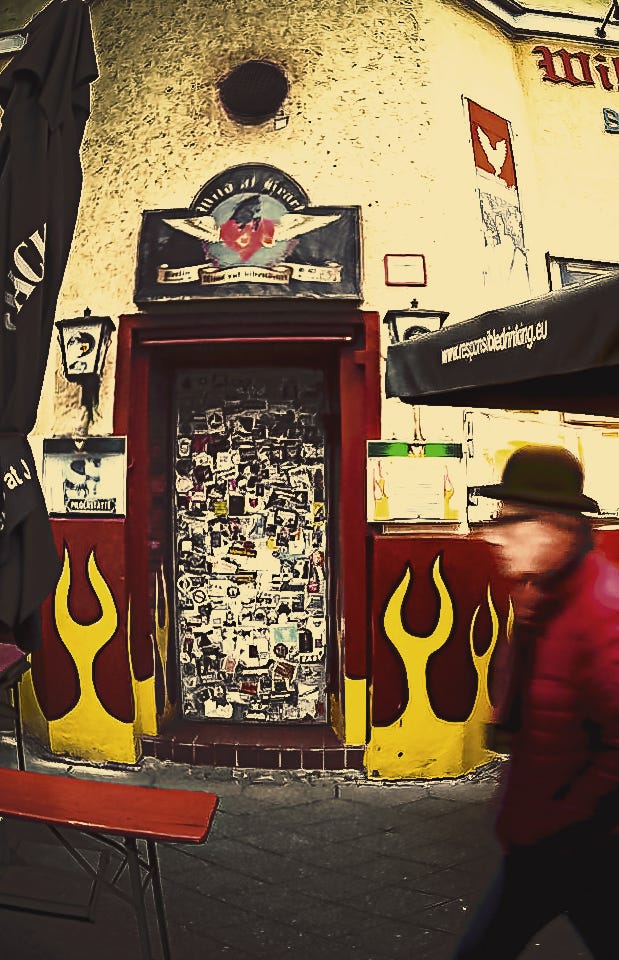
Street photography allows us to walk, look, and to observe without having to explain our actions of gathering information about our environment.
Humans feel secure when they understand more about their surroundings, Street photography gives us the chance to develop an intimacy with those fleeting moments that constantly occur.
We know that things are happening whether we are looking or not. The camera allows us to prove that it happened, and that’s about all it does.
Watching strangers in public places, their movements and mannerisms, stopping and starting, the clothes they wear and the way they interact with other people are fascinating experiences — even for the coffee drinker sitting in a café, without a camera, not a street photographer, the movement of life is beguiling.
The street photographer on the street is experiencing a different thought process to the coffee drinker. The so-called people watcher collects memories that can be recalled at a later date, and hopefully re-run in the mind as a narrative.
The street photographer is taken by the mystery of an unknown figure interacting with a shadow, reflecting light off clothing, or the wonderful emotion felt when the wind drags the tail of a coat outwards and upwards for a short moment. The visual arts have a long fascination with drapery and the fall of cloth.

A photograph is a still moment, a captured thought, or maybe it’s simply a mystery that we can never fully solve. It can’t be thought of as a narrative.
When we took the photo we didn’t understand why the person was there, what their intentions were, or why we found it so fascinating. There’s no time to consider things when taking a street photo. If the results are worth keeping the photographer will be just as astonished at the result as other people who see it. The moment was fleeting, and there was no known narrative.
Painting Pictures
A painter spends a lot of time thinking about their subject and the theme it represents. They have the opportunity to draw first, then paint, then scrape out, then adjust colours on the palette. A painter plans much of the work, even painters who claim their work is the result of spontaneous action, already know what their theme is and which material is best to render the result they hoped for.
The Ever Changing Environment
A street photographer adjusts according to the light and the natural ambient of the environment — there is a strong element of being dictated to by nature. To seek out a subject is possible, but to impose a theme onto a street photography outing, narrows things down to make it difficult.
The challenge of identifying rhythms and flows in crowds, the mood of a street, and atmospheres such as wind, rain, snow, clouds that shift constantly, creates a conflict in the mind of the observer that threatens the ability to see the moment clearly.
Many beginner street photographers fall quickly into the trap of learning to anticipate people’s movements. Too much of this thinking leads to repetition in the results — a dark shadow, triangular and long, or a length of darkness contrasted with strong sunshine, a street corner, and a person exiting from the shadow into the light makes a great shot. When it turns up too often in a batch of photos, then it’s due to not looking at the street as an ever-changing environment, but playing it safe by attempting to master the same moment over and over again.
To wait and to see what happens is street photography. Nothing might happen. Then the photographer tries to get an angle on this nothing and take photos of a seemingly bland and boring environment.
Conflicts and the Non-Thinking Moment
The human mind, constantly in conflict with its own thoughts, believes in what it sees. Later when the photographer sits alone and sifts through a day’s photography and searches for the shot of those moments that seemed so boring, they can be overwhelmed by what they missed with their eyes but the camera caught. Some of the best shots are taken when the photographer is not thinking deeply about the subject, just pointing and quickly shooting.

Leave a Reply
You must be logged in to post a comment.